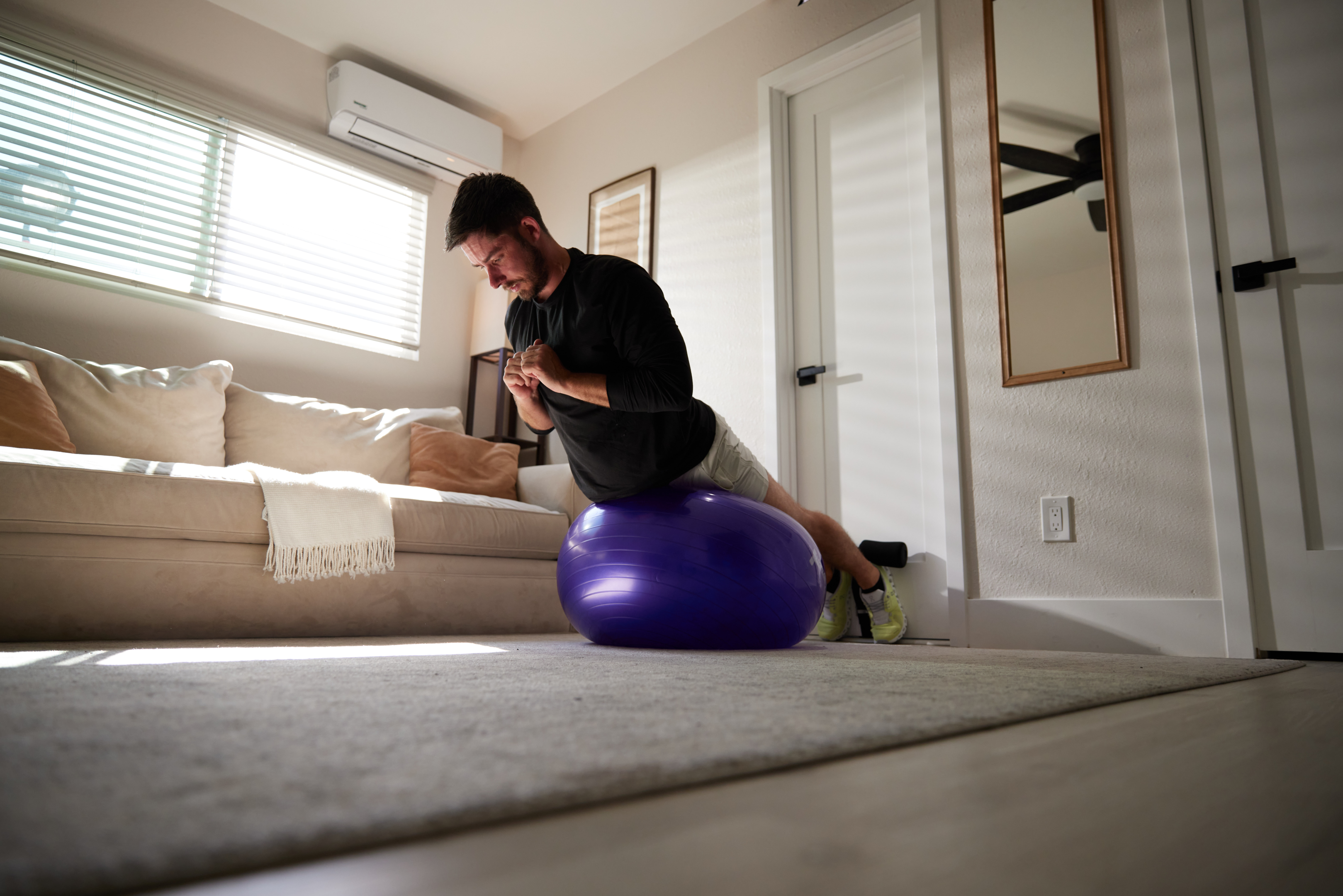Experiencing lower back pain can feel like carrying a heavy burden that affects your everyday activities, mood, and quality of life. When you feel the pain as you slowly roll up from your bed, you know you have to do something about it. Whether it's caused by a specific condition or simply the result of daily stresses on your body, finding relief is crucial.
Engaging in targeted exercises can significantly help by strengthening your back, improving flexibility, and reducing pain. Let’s explore five structured exercises that progress from simple to more demanding, helping you to carefully manage and alleviate your lower back pain.
1. Elephant Walk
Why it helps: This exercise is excellent for easing into physical activity when your back feels tight. It gently stretches the hamstrings and lower back muscles, which are often culprits in lower back discomfort. By reducing tension in these areas, the exercise can help alleviate pain and improve mobility.
How to do it: Stand with your feet flat, hip-width apart, and your knees slightly bent. Bend forward at the waist and let your arms hang loosely towards the ground—this is the starting position. Gently rock your knees back and forth, starting with the left leg and alternating on the right, feeling a gentle stretch in your lower back and legs.
Sets and reps: Perform 3 sets of 10 repetitions each.
Best time to do it: This is a great morning exercise or can be used as a warm-up before more strenuous activity.
2. Hip Thrusts with Knees Bent
Why it helps: Hip thrusts strengthen the glutes and hamstrings, which are supportive of the lower spine. Strong glutes ensure better support and less strain on your lower back, helping to manage pain and prevent future discomfort.
How to do it: Lie on the ground with a yoga ball supporting your upper back and a Nordstick positioned behind your heels—make sure to keep your feet flat through the entire exercise. With your knees bent and feet flat, push through your heels to lift your hips up into a bridge position, squeezing your glutes at the top. Strengthening your hip flexor muscles is also crucial as they provide additional support to the lower back by improving posture and supporting the back while walking, standing, and sitting.
Sets and reps: Start with 2 sets of 12 repetitions, increasing as you build strength.
Best time to do it: Include this in your strength training sessions or after a light cardio routine.
3. Plank for Strengthening Abdominal Muscles
Why it helps: Holding a plank strengthens the entire core, including your abdominal muscles and lower back. This exercise promotes a healthy posture and can significantly contribute to reducing low back pain by stabilizing your lower spine. Additionally, planking is particularly effective in strengthening weak abdominal muscles, which are crucial for supporting the lower back and preventing lower back pain by enhancing the stability provided by the transversus abdominis muscle.
How to do it: Place your elbows on a NordPad for cushioning and extend into a plank position. Your body should form a straight line from your shoulders to your ankles. Make sure you keep your left and right leg straight. Engage your core and keep your hips level.
Sets and reps: Hold for 20 to 30 seconds, repeating 3 times.
Best time to do it: Planks are versatile and can be done any time, ideally after a warm-up.
4. Palloff Press
Why it helps: This dynamic exercise challenges your core stability and strengthens the abdominal and back muscles by resisting rotation. It's effective for building the muscle endurance needed for a strong, pain-free back.
How to do it: Attach an OmniBand to a door at chest height. Stand perpendicular to the door with the band in both hands, extend your arms, and press the band straight out in front of your chest. Resist the pull of the band to avoid rotating your torso. Some people like to do this exercise with their knees bent slightly, but you can do it standing up as well.
Sets and reps: Do 3 sets of 10 presses on each side.
Best time to do it: This exercise fits well into a core workout or as part of a circuit training session.
5. Back Extension
Why it helps: Targeting the erector spinae, which are the muscles that run along your spine, back extensions help in strengthening your back directly. This exercise is crucial for building up endurance and capacity in your lower back muscles, thus providing better support and reducing pain. Additionally, back extensions not only strengthen the back but also help support the upper body and may lead to muscle soreness as a sign of muscle strengthening, which is normal and indicates progress, but it's important to increase activity gradually to prevent injury.
How to do it: Secure your feet under a NordStick and lie facedown with a yoga ball positioned under your hips. Slowly lift your chest off the ball, extending your spine, then gently lower back down.
Sets and reps: Begin with 2 sets of 10 repetitions, and as your strength increases, so too can your reps.
Best time to do it: Perform this exercise at the end of your workout when your muscles are warmed up.
Managing Back Pain and Improving Mobility
Should I stretch when my lower back hurts? Yes, gentle stretching can be beneficial when dealing with lower back pain. It can help relieve muscle tightness and improve your range of motion. However, starting any stretch or exercise from the wrong starting position may make the pain worse, emphasizing the importance of correct form. If the pain is severe, it’s wise to start with very mild stretches and gradually increase the intensity as your comfort allows.
What to do when you can barely walk from lower back pain? When back pain severely limits your mobility, it’s important to rest initially. Apply ice or heat as needed to reduce inflammation and pain. As you start feeling a little better, engage in light activities such as walking short distances or doing gentle stretches. Always begin with the correct starting position for any light activity or gentle stretch to prevent making the pain worse. Always listen to your body and consult with a healthcare professional or a physical therapist to ensure you’re not aggravating the condition.

Conclusion
Regularly performing these lower back pain exercises can lead to significant improvements in your back health and overall well-being. Remember, the key is consistency and gradual progression. Start small, and as you build strength and flexibility, you'll likely notice a decrease in pain and an increase in your ability to perform daily activities without discomfort. Take control of your lower back health today by integrating these exercises into your routine!


